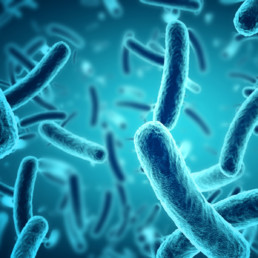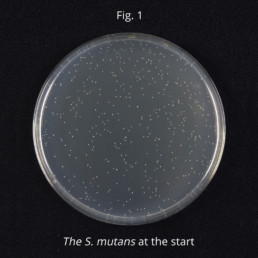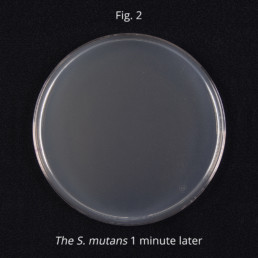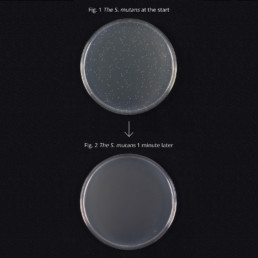
How Negative Ions Clean Your Teeth
1. Ionic-Coating
The surfaces of your teeth will be safely coated with negative ions when you brush your teeth with our ionic electric toothbrush. This naturally repels the negatively-charged S.mutans and prevents them from adhering to the surface of your teeth. Think of two magnets that repel each other when their negatively charged poles are placed in proximity. This “ionic protection” is harmless, and it does not require chemicals like fluoride typically found in other dental hygiene products.
2. Easy Plaque Removal
Our electric toothbrush generates highly unstable negative ions through photocatalytic reaction and body circuit flow. In an effort to stabilize their molecules, negative ions seek out to adhere to the molecules of plaque build-up. The negative ions will even get in between the crevices of your teeth and inside your gum pockets, destabilizing the attraction between plaque and teeth. This reaction weakens the plaque attachment to teeth, allowing for effortless removal when combined with gentle brushing.

How Negative Ions Are Generated
When the ION-Sei ionic technology toothbrush is active, it generates negative ions from two areas: 1. The conductor panel on the handle where it’s held and 2. A titanium dioxide bar placed inside the neck area where it touches the UV LED light. These negative ions have a highly unstable nature due to their unpaired electrons. As a result, they seek out and take electrons from plaque and bacteria molecules, thereby making those molecules unstable and easily removed.

- – Negative ions generated by Body Circuit Flow
- – Negative ions generated by Photocatalytic reaction
Negative Ion Generation 1:
Body Circuit Flow
ION-Sei has a small battery built into the handle of the toothbrush. The battery connects to a titanium dioxide bar that runs throughout the toothbrush and is exposed at the neck. When the titanium dioxide bar is moistened prior to brushing, and when your fingers come in contact with the conductor panel, the wetness creates a closed body circuit that flows from the toothbrush to the mouth. When you brush, a weak current is generated, and negative ions flood into your mouth through this body circulation.
Negative Ion Generation 2:
Photocatalytic reaction
Photocatalysis is a natural chemical reaction that occurs when a light source interacts with the surface of a titanium dioxide bar. This reaction is recreated when the ION-Sei toothbrush is activated, and UV LED light reaches the titanium dioxide rod in the neck of the toothbrush. The reaction produces negative ions, which are then transferred into your mouth through liquid carriers like water and saliva. These negative ions are highly unstable molecules that seek out and adhere to S.mutans bacteria, the main source of your cavities.
Your Mouth: A Breeding Ground for Disease
There are more bacteria in your mouth than you can imagine.The damaging streptococcus mutans feeds on sugar to erode teeth enamel.
Porphyromonas gingivalis eats away at gums causing painful receding gums and tooth loss.
Studies* have shown those who don’t brush regularly are at higher risk for developing other health-related issues, including cardiovascular disease, diabetes and pregnancy complications.
* Source: Oral Health Foundation

Your Mouth: A Breeding Ground for Disease
There are more bacteria in your mouth than you can imagine.The damaging streptococcus mutans feeds on sugar to erode teeth enamel.
Porphyromonas gingivalis eats away at gums causing painful receding gums and tooth loss.
Studies* have shown those who don’t brush regularly are at higher risk for developing other health-related issues, including cardiovascular disease, diabetes and pregnancy complications.
* Source: Oral Health Foundation
Clinically Proven
Photocatalysis has been clinically proven to have an antibacterial effect against plaque-causing bacteria such as streptococcus mutans.
Experts proved using a toothbrush equipped with a Titanium Oxide (TiO2) semiconductor removes plaque with a chemical reaction. Consistent brushing reversed the charge found on the surface of teeth.
When compared to other versions, successful results showed longer-lasting plaque removal by physical function and chemical reaction.


Clinically Proven
Photocatalysis has been clinically proven to have an antibacterial effect against plaque-causing bacteria such as streptococcus mutans.
Experts proved using a toothbrush equipped with a Titanium Oxide (TiO2) semiconductor removes plaque with a chemical reaction. Consistent brushing reversed the charge found on the surface of teeth.
When compared to other versions, successful results showed longer-lasting plaque removal by physical function and chemical reaction.

Customer Review
“In the beginning, I was skeptical about electrical toothbrushes however after using it for one week I started to notice the benefits: whiter teeth, faster cleaning.”
Giovanni, UK
Customer Review
“In the beginning, I was skeptical about electrical toothbrushes however after using it for one week I started to notice the benefits: whiter teeth, faster cleaning.”
Giovanni, UK
